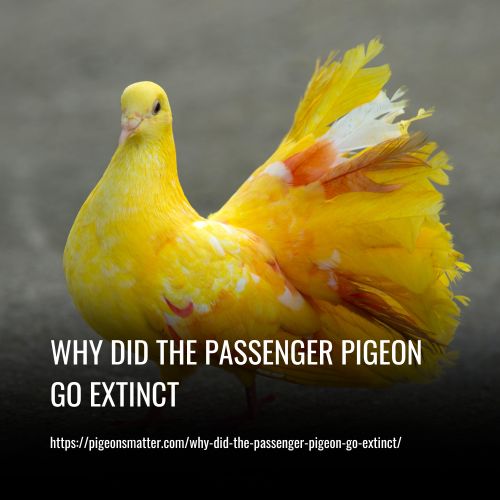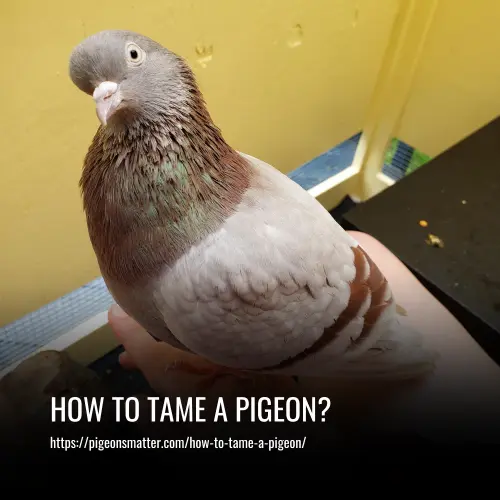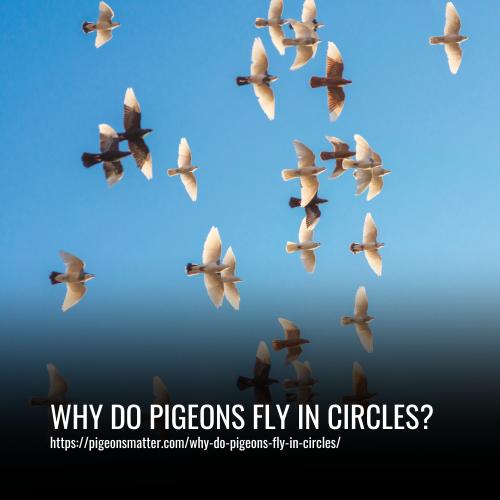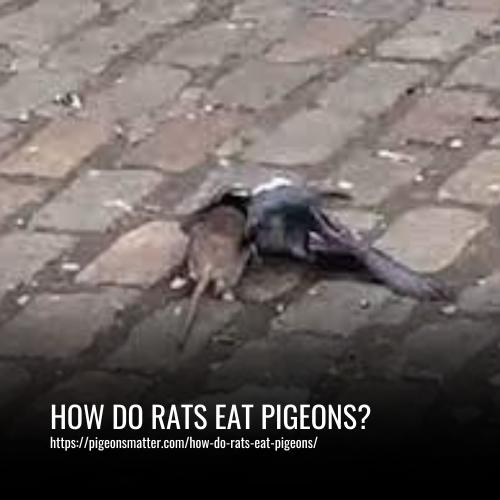The extinction of the Passenger Pigeon can be attributed to two main factors:
- Commercial Exploitation
- Loss of Habitat

How Did the Passenger Pigeon Go Extinct
The decline and eventual extinction of the Passenger Pigeon can be attributed to two main factors: widespread hunting for commercial purposes and the destruction of its natural habitat.
1. Commercial Exploitation
The Passenger Pigeon was heavily hunted for its meat, leading to mass-scale exploitation. The large flocks and communal breeding habits of the species made them easy targets for hunters. The demand for pigeon meat, particularly in urban areas, drove the relentless hunting that ultimately contributed to the species’ extinction.
2. Loss of Habitat
The destruction and fragmentation of the Passenger Pigeon’s habitat also played a crucial role in its decline. As human populations expanded and industrialization progressed, vast areas of forests were cleared for agriculture and urban development. This loss of suitable habitat severely impacted the species’ ability to find suitable nesting and feeding grounds, leading to a decline in population and eventual extinction.
Both these factors, coupled with a lack of conservation efforts, resulted in the rapid demise of the Passenger Pigeon. Today, it serves as a critical reminder of the consequences of unchecked commercial exploitation and habitat destruction on vulnerable species.
When Did the Passenger Pigeon Go Extinct
The passenger pigeon went extinct in 1914 when the last individual, named Martha, died at the Cincinnati Zoo. She was 29 years old and was unable to produce viable eggs. The last known shooting death of a passenger pigeon was in 1900, when a boy shot a pigeon without knowing its species and had it mounted. By the time Martha died, natural populations of passenger pigeons had already disappeared.
What Did the Passenger Pigeon Eat
The passenger pigeon had a diverse diet that included tree nuts such as beechnuts and acorns, as well as seasonal berries like grapes, pokeberries, and blueberries. They also consumed invertebrates like caterpillars and worms, especially during the breeding season.
Additionally, passenger pigeons were known to cause significant damage to crops like buckwheat and corn, leading to widespread hunting and farmer’s perception of them as pests. Despite deforestation, they were able to adapt to less desirable food sources such as farmed corn, indicating that the extinction of the passenger pigeon was not due to a lack of food availability.
Did the Passenger Pigeon Carry Anything
While the North American passenger pigeon did not carry anything, there are pigeons called “carrier pigeons” that have been used to deliver messages for centuries. The ancient Persians, Greeks, and Romans were among the first to use carrier pigeons, and they were extensively used by Europeans until the telegraph was invented.
Today, pigeons used for messaging are known as homing pigeons, as they have the remarkable ability to return to their owner’s roost. Although the USPS used to employ homing pigeons, this practice was discontinued with the rise of the telegraph and railroad. However, there are still private individuals who own and operate homing pigeon messaging services.
Why Are They Called Passenger Pigeons in North America
The North American passenger pigeon got its name from the French word “passager,” which means to pass. This name reflects the massive size of their flocks that would pass over humans during their migrations. They were once a common sight in North America, but unfortunately, they went extinct due to overhunting and habitat loss.
Homing pigeons, on the other hand, are domesticated rock pigeons that have been bred for their ability to find their way home from long distances. They are often used for racing or carrying messages. Although they are also pigeons, they are a different species from the passenger pigeon.
Despite being a wild pigeon, the North American passenger pigeon was sometimes referred to as a carrier pigeon. This is likely due to their similar appearance to domesticated carrier pigeons, which were used for carrying messages before modern communication methods were developed.
Can We Bring Back The Passenger Pigeon
Although we cannot bring back the passenger pigeon as an exact clone from its historical genome, there is still hope for restoring its unique ecological role. By using modern genome editing and reproductive technologies, we can bring back some of the unique passenger pigeon genes through precise hybridization. This process can result in a new hybrid generation of the passenger pigeon that carries a small but significant genetic legacy of its extinct ancestors.
This approach can help restore the passenger pigeon’s ecological niche, which is important for maintaining the balance of the ecosystem. While it may not be the same as having the original species back, it is a step towards preserving biodiversity and restoring the balance of our environment.
Why Go Through The Trouble Of Reviving The Passenger Pigeon Ecotype
The ecological role of the passenger pigeon has been a topic of debate and speculation for some time. Our project aimed to investigate the natural history of this species, in light of conflicting research findings. There is disagreement among published research regarding the passenger pigeon’s ecological role in the environment. Our investigation sought to shed light on this topic and provide a clearer understanding of the species’ impact on its ecosystem.
By studying the natural history of the passenger pigeon, we hope to gain insights into its behavior and the role it played in shaping its environment. While the species is now extinct, understanding its ecological role can provide valuable lessons for conservation efforts aimed at protecting other species and preserving the delicate balance of our natural world.
FAQs
Yes, pigeons served in the Navy as messengers during both World War II and as early as the 1880s. They were used to relay important messages from ships to the mainland before telegraphs were widely available. These homing pigeons played a crucial role in providing strategic advantages and saving lives. Some of them even had customized uniforms with a chest pocket made by Maidenform to carry their messages.
Yes, drug smugglers have been known to use pigeons to transport illicit substances. While they do not use the extinct North American passenger pigeon, other types of pigeons are utilized for this purpose. There have been instances of these drug birds being discovered at border crossings or attempting to leave jails. Some pigeons are intercepted alive, while others are shot down. The exact number of drug smuggling pigeons in existence today is unknown.
Efforts to protect the passenger pigeon were minimal and came too late to save the species. By the time conservation efforts were put into place, the population had already declined to a critical level.
It is possible that with more proactive conservation efforts and better management of hunting, the passenger pigeon could have been saved from extinction.
The extinction of the passenger pigeon serves as a cautionary tale about the impact of human activity on wildlife and the importance of proactive conservation measures to protect endangered species from a similar fate.
Conclusion
The story of the passenger pigeon is a tragic reminder of the impact that humans can have on the natural world. It’s important that we learn from our mistakes and take steps to protect the species that are still with us today.
By working together to conserve our wildlife and their habitats, we can ensure that the passenger pigeon’s fate is not shared by any other species in the future. Let’s honor the memory of this incredible bird by taking action to protect the world around us.


